Artemis set for launch – what you need to know about NASA’s mission to put humans back on the moon | Science & Tech News
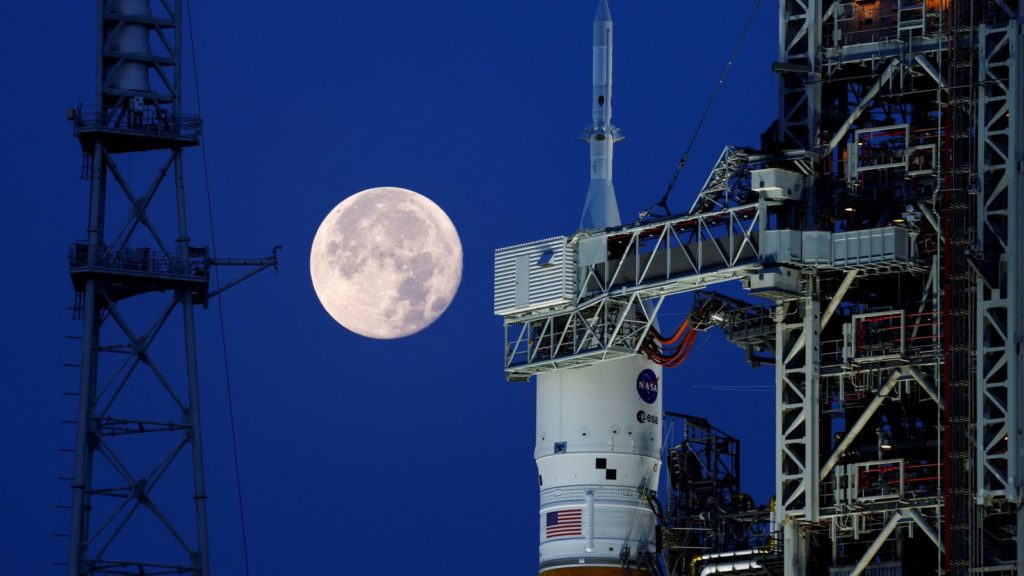
The launch of the mission that aims to put humans back on the moon will go ahead as planned next week, say NASA bosses.
Artemis 1 was given the green light during a flight readiness review at Kennedy Space Center in Florida.
Here’s what you need to know about the historic space endeavour.
What does Artemis hope to achieve?
It is made up of three stages.
The first is a 42-day uncrewed flight around the moon. It will test the huge rocket and the Orion spacecraft that astronauts will eventually travel in.
The Orion capsule will fly 60 miles above the moon at its closest, and during re-entry weeks later will emerge into the Earth’s atmosphere at 25,000mph before splashing down off the California coast.
A crew will strap in and blast off for the first time for more testing during Artemis 2. The four astronauts have so far not been named, but this stage is pencilled in for 2024.
Lasting about eight to 10 days, they will do a lunar flyby before returning to Earth.
The Orion spacecraft will eventually carry humans to the moon
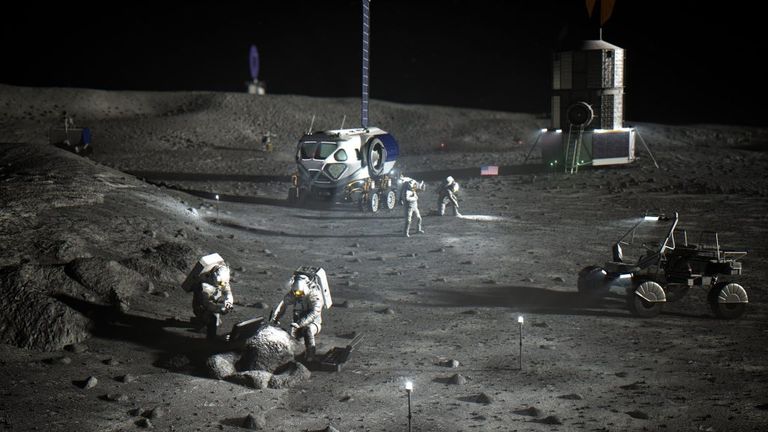
America plans to set up base on the moon for subsequent missions. Pic: NASA
Humans will finally land on the moon again during Artemis 3, with NASA saying the crew will include a woman and a person of a colour.
The timeline depends on how well the previous missions go, but it’s currently slated for 2025.
NASA hopes to build a base camp and conduct annual missions and use it as a testbed for even more ambitious missions, starting with getting a human to Mars.
How powerful is the Artemis 1 rocket?
The 98-metre Space Launch System (SLS) is the most powerful rocket NASA has ever built and in this crucial testing phase it will fly further than any spacecraft built for humans: 40,000 miles past the far side of the moon and 280,000 miles from Earth.
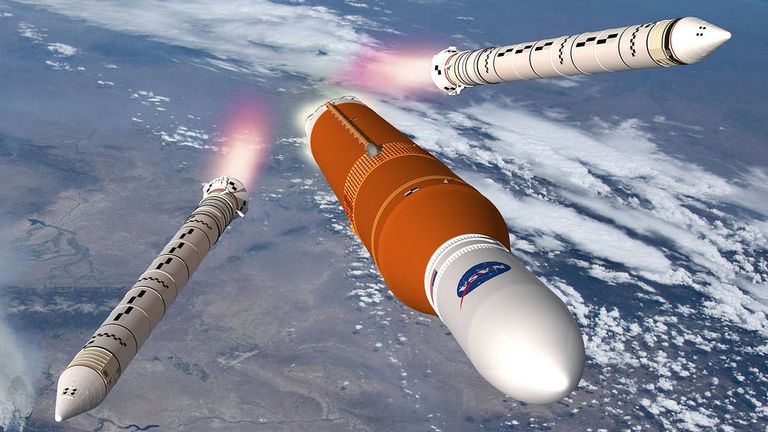
Each booster generates more thrust than 14 jumbo jets. Pic: NASA
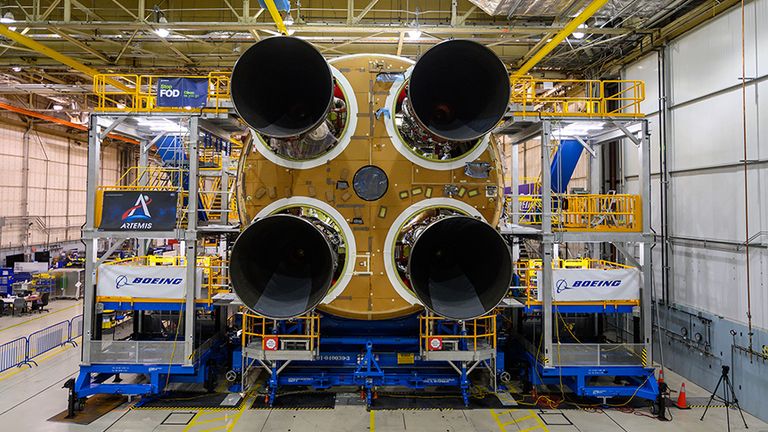
Four RS-25 engines also power the rocket. Pic: NASA
Its 8.8 million pounds of thrust at launch is 13% more than the Space Shuttle, and 15% greater than the Saturn V rocket used on the Apollo missions.
Each of the two boosters generates more thrust than 14 four-engine jumbo commercial airliners, according to NASA, and will fire for 126 seconds, providing more than 75% of the vehicle’s thrust before they break off.
It’s also powered by four RS-25 engines, with the outbound trip to the moon taking several days.
When’s launch day and how can I watch?
The first Artemis mission is set to blast off from Kennedy Space Center on 29 August, with a two-hour launch window that opens at 8.33am (1.33pm UK time) local time.
Streaming of the launch will start on NASA’s website at 6.30am local time (11.30am UK time), but there’s also a stream available now of the rocket on the launchpad.
Hollywood stars Jack Black, Keke Palmer and Chris Evans will feature in a live broadcast of the launch.
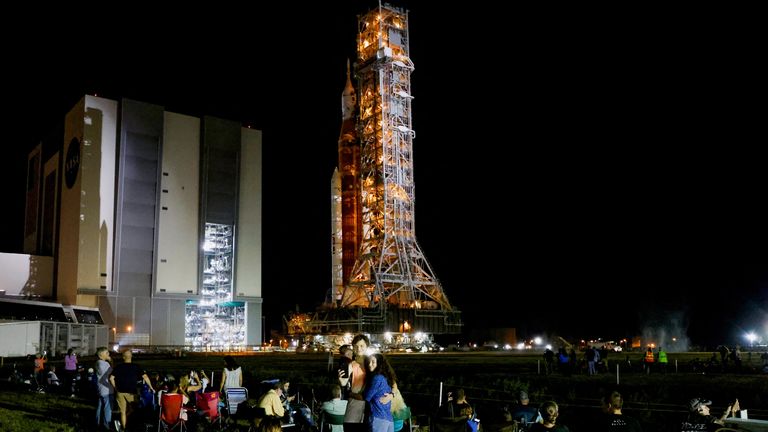
The rocket will launch from Kennedy Space Center in Florida
When was the last time a human was on the moon?
More than 50 years ago: it was Apollo 17 in December 1972 – about three and a half years after Neil Armstrong made history with the first moon walk.
With President Kennedy’s big goal achieved, the final three Apollo missions were cancelled and NASA’s funding cut.
The new missions are named after Greek goddess Artemis, the twin sister of Apollo.







Recent Comments